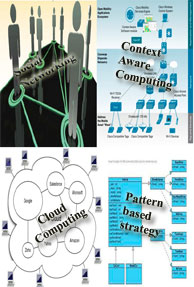The Commonwealth Games scam could be much bigger than previously thought. Every day, more and more Games related projects are coming under the scanner and fresh details of corruption and bungling indicate how deep the rot is.
NDTV has learnt that the Central Vigilance Commission (CVC) is now looking at a robbery that could be to the tune of five thousand to eight thousand crore.
So what has the country's anti-corruption watchdog dug up so far in the great Games robbery? Sources say the CVC has found several discrepancies in tenders for Games related projects:
* Large sums of money have allegedly been paid to non-existent parties
* The execution of many contracts has been deliberately delayed
* The CVC has found that money paid for many Games related projects are abnormally high
* It has also detected widespread bunglings in the purchase of equipment for the Games
New projects under scanner
With new Games related projects coming under the scanner, it's truly a Commonwealth can of worms. Let's now take a quick look at the fresh Games related projects in which the CVC has detected discrepancies:
* It's looking into possible fraud in the purchase of HOVA Courts for the Badminton stadium
* The CVC has also found fraud in tenders for the installation of kitchen equipment
* Funds have allegedly been siphoned in video board tenders - at the Major Dhyan Chand National Stadium
* It has also found irregularities in contracts given for audio system, LED display boards, communication units at CWG venues
Posted by
dinesh







Etios, that would come in both hatchback and the bigger sedan version, has been specifically developed for the Indian market and the company is investing 3,200 crore at its second plant in Bangalore for the new car.
Category:
0
comments
Posted by
dinesh
Nearly after 10 months of his last release, director Srinu Vytla is finally starting his next film. He has been waiting to start Dhukudu with Mahesh Babu since July, the star kept on postponing every month. And now Mahesh Babu finally said he is ready to start as Khaleja released. So shooting of Dhukudu is commencing this weekend in Turkey. “I will be leaving for Turkey on Friday for Dhukudu where we will be shooting for about 15 days. I am happy to begin Srinu Vytla’s movie with a positive mood,” Mahesh Babu said.
The film is being produced by 14 Reels Entertainment and has Samantha as the heroine.
The film is being produced by 14 Reels Entertainment and has Samantha as the heroine.
Category:
0
comments
Posted by
dinesh
The new OS will allow users to run and easily switch between multiple applications. With the "Just Type" feature, users can search for data on a device or the Internet, and also start writing emails or update status messages before opening an application. Customized shortcuts help enable these actions. WebOS also supports Flash 10.1 and HTML5. The other notable feature in the operating system is called as "Synergy" which can automatically connect and populate the smartphone with data from email services like Microsoft Exchange or from websites such as Google and Facebook. The OS also runs Skype Mobile in it.
HP has said that WebOS 2.0 will go into many other devices besides smartphones such as tablets at a later period. However, the phone's pricing is not made public yet.
The Palm Pre 2 has a 3.1-inch screen, runs on a 1GHz processor and features a 5-megapixel camera. It weighs about 145 grams.
"With webOS 2.0, we're advancing the innovations we introduced 16 months ago, expanding the features that make webOS great for consumers, enterprises and developers," said Jon Rubinstein, Senior Vice President and General Manager, Palm Global Business Unit, HP. "We've made tremendous strides since the platform launched, and now we're taking our biggest leap forward with powerful new features that make it easier to get more things done with your webOS device," he added.
Palm Pre 2 smartphone will be available in France from SFR this week and is scheduled to hit the U.S. and Canada markets in the coming months from Verizon Wireless.
Category:
0
comments
Posted by
dinesh
Bangalore: The four big trends which might change the face of IT in the next few years are cloud computing, social computing, context aware computing and pattern based strategy. According to Peter Sondergaard, SVP of Research for Gartner, none of these trends are new but they do have the potential to change the IT industry.
By citing various examples Sondergaard said that it usually takes about 10 years for a technology to change the entire business scenario. He explained that while the IBM PC appeared in 1981, it didn't reach an installed base of 100 million units until 1990. Now there are 1.4 billion PCs installed, which he said should rise to more than 2 billion by 2015.

"Like it or not, we are on our way to an IT-driven intelligence society. Information will be the oil of the 21st century,? said Sondergaard. Through cloud computing, businesses can lower their prices and it also has the capability to change businesses as well as technology. With the help of social computing differences between enterprise and personal computing can be narrowed down and social networking within and between organizations will help improving productivity. Many connected devices with sensors that understand the location, language, feelings and dreams of consumers by using patterns to determine your desires can be achieved through context-aware computing. Pattern-based strategy that uses predictive analytics on both structured and unstructured data will let us seek and model patterns.
By citing various examples Sondergaard said that it usually takes about 10 years for a technology to change the entire business scenario. He explained that while the IBM PC appeared in 1981, it didn't reach an installed base of 100 million units until 1990. Now there are 1.4 billion PCs installed, which he said should rise to more than 2 billion by 2015.
"Like it or not, we are on our way to an IT-driven intelligence society. Information will be the oil of the 21st century,? said Sondergaard. Through cloud computing, businesses can lower their prices and it also has the capability to change businesses as well as technology. With the help of social computing differences between enterprise and personal computing can be narrowed down and social networking within and between organizations will help improving productivity. Many connected devices with sensors that understand the location, language, feelings and dreams of consumers by using patterns to determine your desires can be achieved through context-aware computing. Pattern-based strategy that uses predictive analytics on both structured and unstructured data will let us seek and model patterns.
Category:
0
comments
Posted by
dinesh
Bangalore: The companies in the U.S. cannot ask their potential employees about their ethnicity and it is strictly followed in their work culture. Despite such an imposition, it is known across the world that an impressive number of Indians contribute to the organized sector of the U.S. economy. 34 percent of employees at Microsoft and 36 percent of scientists at NASA are Indians. What makes our capable workforce don roles in the companies abroad?

For many years, working and getting settled abroad used to fetch a feeling of self actualization to an Indian and his family, but is that still the reason which pulls Indians to an unknown land? To figure out the various reasons on why Indians prefer working in a foreign organizational setup, Siliconindia engaged in short interactions with some IT professionals who have experienced both the work cultures. Based on that, certain reasons which make Indians feel comfortable working in the U.S., were figured out.
WORK CULTURE: Most of the Indians who have been exposed to the American work culture, find it difficult to conform to the Indian work culture. Majority of IT professionals feel that the work culture in a multinational company (MNC) is more planned and less ambiguous compared to their Indian contemporaries. The process driven structure, proper delegation of work and a robust infrastructure makes work environment more favorable in other countries. Looking at the resistance of Indian economy towards the global economic downturn, many expatriates looked India as a lucrative option for their career but it seems easier to analyze the broad environment till one gets into the reality of dealing with it.
Many multinational companies prefer India as a destination for maintaining their global operations. This has led to the acceptance of American work culture in many offices but the reforms are not strictly followed by any level of management in an organizational hierarchy. "One will experience a preference over U.S. work culture because of a well established infrastructure, matured planning and process. The work culture in U.S. is absolutely process driven," says Ravi Jagannathan, MD and CEO, 3i Infotech.
LABOR LAWS: Serving a notice period is no doubt a nightmare for almost every IT professional. Employees cannot receive their relieving letter till they serve the notice period of two to three months. Until they have their relieving letter in hand, it becomes difficult for an IT professional to join in other competent organizations. It is seen that in an Indian work environment, the employer is vested with all the rights to decide on the terms and conditions of a job. Contrary to that, the employment law in the U.S. has always been governed by 'at will' employment, where the employment relationship could be abandoned by either party at any point of time, which means that there is no need to serve any kind of notice period.
EMPLOYEES' RIGHTS: This is probably one area where the Indian IT industry is seriously working upon to control the growing rate of attrition. Many popular It companies sanction leaves other than the Sick Leave (SL), Casual Leave (CL) and Earned Leave (EL). There are leaves granted for Family and Illness, personal days, Education Leaves of Absence with Pay, Parental Leave, Short Term Disability, funeral leave and many more. The IT companies in India are focusing to facilitate the IT professionals with all these relaxation provisions so that the employees add more value to their work. It could be expected that in near future, people working in India would have an act on similar lines of the 'American Disability Act, 1990' which prohibits discrimination of any kind to an employee at workplace.
WORKING FROM HOME: Working from home is quite acceptable in the U.S. This saves employees' time, money and keeps their focus on the work intact. In India, the employers are jittery about letting their employees work from home. Though the culture of working from home has picked up in India as well but there are inhibitions related to it, both at the employer's and employee's end. The employer's usually feel that employees would misuse the facility of working from home and on the other hand, the employees find it better working in their office as they want to meet up their colleagues who share a friendly relation with them. "In an Indian work culture, office mates give a feeling of the extension of family for the employees," says Jagannathan. Most of the IT professionals have realized that, in U.S., the employers' have no issues with their employees as long as they meet the deadline of the deliverables.
TIME MANAGEMENT: The U.S. work culture is more focused on maintaining a proper timeline at work place. It is the attitude of employees out there to deliver valuable output on time. Even if they spend less time at their desk, their credibility is not questioned till they deliver the target set for them. "When it comes to the work environment, a U.S. company always maintains a popular thought - the output. If the output is as per expectations, then it doesn't matter whether employees are at their desk for 9 hours or two hours," says an ex-Satyamite, who is currently working with a top telecom service provider in U.S.

PAY SCALE: The most important of all the reasons for which Indians prefer working abroad is 'Money'. The fact is, salary is seen as the biggest motivating factor. One of the major reasons for attrition in IT industry is the pay scale. If an employee feels that his or her salary is not competitive, then the employees tends to look for another job which would give them a hike of 30 to 40 percent. When IT professionals are sent onsite, they realize that the workforce employed in other MNCs (who usually serve at the same capabilities) are paid much better than them. This pesters the Indian IT professionals to switch to other companies and if the job demands them to reside in U.S. they tend to do so.
The difference in global work culture still persists but due to globalization and outsourcing the degree of discrepancies has narrowed down over the years. There have been debates about the Indian IT industry and the industry experts come up with a lot of methods to deal with the issues prevalent in the internal system. The question which still remains unanswered is whether the laws of our land be more befitting to the employees working in various sectors at present or will the $50 billion IT industry structure out special laws and prerogatives for its workforce? If these problems are addressed, will the Indian workforce which contributes substantially to the U.S. economy, prefer to come back to their land?
For many years, working and getting settled abroad used to fetch a feeling of self actualization to an Indian and his family, but is that still the reason which pulls Indians to an unknown land? To figure out the various reasons on why Indians prefer working in a foreign organizational setup, Siliconindia engaged in short interactions with some IT professionals who have experienced both the work cultures. Based on that, certain reasons which make Indians feel comfortable working in the U.S., were figured out.
WORK CULTURE: Most of the Indians who have been exposed to the American work culture, find it difficult to conform to the Indian work culture. Majority of IT professionals feel that the work culture in a multinational company (MNC) is more planned and less ambiguous compared to their Indian contemporaries. The process driven structure, proper delegation of work and a robust infrastructure makes work environment more favorable in other countries. Looking at the resistance of Indian economy towards the global economic downturn, many expatriates looked India as a lucrative option for their career but it seems easier to analyze the broad environment till one gets into the reality of dealing with it.
Many multinational companies prefer India as a destination for maintaining their global operations. This has led to the acceptance of American work culture in many offices but the reforms are not strictly followed by any level of management in an organizational hierarchy. "One will experience a preference over U.S. work culture because of a well established infrastructure, matured planning and process. The work culture in U.S. is absolutely process driven," says Ravi Jagannathan, MD and CEO, 3i Infotech.
LABOR LAWS: Serving a notice period is no doubt a nightmare for almost every IT professional. Employees cannot receive their relieving letter till they serve the notice period of two to three months. Until they have their relieving letter in hand, it becomes difficult for an IT professional to join in other competent organizations. It is seen that in an Indian work environment, the employer is vested with all the rights to decide on the terms and conditions of a job. Contrary to that, the employment law in the U.S. has always been governed by 'at will' employment, where the employment relationship could be abandoned by either party at any point of time, which means that there is no need to serve any kind of notice period.
EMPLOYEES' RIGHTS: This is probably one area where the Indian IT industry is seriously working upon to control the growing rate of attrition. Many popular It companies sanction leaves other than the Sick Leave (SL), Casual Leave (CL) and Earned Leave (EL). There are leaves granted for Family and Illness, personal days, Education Leaves of Absence with Pay, Parental Leave, Short Term Disability, funeral leave and many more. The IT companies in India are focusing to facilitate the IT professionals with all these relaxation provisions so that the employees add more value to their work. It could be expected that in near future, people working in India would have an act on similar lines of the 'American Disability Act, 1990' which prohibits discrimination of any kind to an employee at workplace.
WORKING FROM HOME: Working from home is quite acceptable in the U.S. This saves employees' time, money and keeps their focus on the work intact. In India, the employers are jittery about letting their employees work from home. Though the culture of working from home has picked up in India as well but there are inhibitions related to it, both at the employer's and employee's end. The employer's usually feel that employees would misuse the facility of working from home and on the other hand, the employees find it better working in their office as they want to meet up their colleagues who share a friendly relation with them. "In an Indian work culture, office mates give a feeling of the extension of family for the employees," says Jagannathan. Most of the IT professionals have realized that, in U.S., the employers' have no issues with their employees as long as they meet the deadline of the deliverables.
TIME MANAGEMENT: The U.S. work culture is more focused on maintaining a proper timeline at work place. It is the attitude of employees out there to deliver valuable output on time. Even if they spend less time at their desk, their credibility is not questioned till they deliver the target set for them. "When it comes to the work environment, a U.S. company always maintains a popular thought - the output. If the output is as per expectations, then it doesn't matter whether employees are at their desk for 9 hours or two hours," says an ex-Satyamite, who is currently working with a top telecom service provider in U.S.
PAY SCALE: The most important of all the reasons for which Indians prefer working abroad is 'Money'. The fact is, salary is seen as the biggest motivating factor. One of the major reasons for attrition in IT industry is the pay scale. If an employee feels that his or her salary is not competitive, then the employees tends to look for another job which would give them a hike of 30 to 40 percent. When IT professionals are sent onsite, they realize that the workforce employed in other MNCs (who usually serve at the same capabilities) are paid much better than them. This pesters the Indian IT professionals to switch to other companies and if the job demands them to reside in U.S. they tend to do so.
The difference in global work culture still persists but due to globalization and outsourcing the degree of discrepancies has narrowed down over the years. There have been debates about the Indian IT industry and the industry experts come up with a lot of methods to deal with the issues prevalent in the internal system. The question which still remains unanswered is whether the laws of our land be more befitting to the employees working in various sectors at present or will the $50 billion IT industry structure out special laws and prerogatives for its workforce? If these problems are addressed, will the Indian workforce which contributes substantially to the U.S. economy, prefer to come back to their land?
Category:
0
comments
Posted by
dinesh
Bangalore: "That was really special. We got the biggest stamp of approval we could have gotten," says Akshay Kothari Co-founder and CEO of Alphonso Labs, which produced the Pulse app, referring to the endorsement from Apple CEO, Steve Jobs. The young Indian grads from Stanford University saw a significant boost when the Apple Guru heaped praises upon their iPad application at the Apple Developers Conference.

Pulse is an elegant news reading application for iPhone, iPad and Android devices created by Akshay Kothari and Ankit Gupta. This mobile application aggregates news from numerous websites and is one of the top-selling news apps for the iPad and iPhone. Its Android app allows users to assemble content from as many as 60 publications. Users also can touch a link that takes them to the actual publication's website.
The company has launched version 2.0 of their Pulse News Reader for iPad. The revised version, Pulse 2.0 expanded to 60 sources of news across five pages, or 12 feeds per page. It is also designed in a way that the user can manage news feed sources. Another interesting feature in the new version called "Pulse Bazaar", provides a way to browse and discover good news sources that you didn't know about. As of now, Pulse 2.0 is an iPad-only app. It is expected that the company will release a new version for the iPhone and Android platforms in the coming weeks.
The idea was sparked at a Stanford course called 'Launch Pad' for aspiring entrepreneurs in which challenge was to create a product in the course of 11 weeks. "The first week of class, we decided we're going to do something for our iPads, and we released our app in six weeks," Kothari said. After the success of the app, Alphonso Labs now has six full-time employees and is moving to an office space of its own.
Although the company had a short period of trouble when Apple removed Pulse from the store following complaints of infringement by the New York Times, it was later reinstated upon clarifying that Pulse is essentially an RSS reader and does no scraping.
It is also reported that Alphonso Labs has raised $1 million in seed funding from Redpoint Ventures, Greycroft Partners, Mayfield Fund and Lightspeed Venture Partners.
The Pulse app for iPad costs $1.99 and 99 cents for the iPhone and mobile Android devices. However, the company declined to disclose revenue figures. The biggest competitor for Pulse is Flipboard which also has got great reviews for its products.
Pulse is an elegant news reading application for iPhone, iPad and Android devices created by Akshay Kothari and Ankit Gupta. This mobile application aggregates news from numerous websites and is one of the top-selling news apps for the iPad and iPhone. Its Android app allows users to assemble content from as many as 60 publications. Users also can touch a link that takes them to the actual publication's website.
The company has launched version 2.0 of their Pulse News Reader for iPad. The revised version, Pulse 2.0 expanded to 60 sources of news across five pages, or 12 feeds per page. It is also designed in a way that the user can manage news feed sources. Another interesting feature in the new version called "Pulse Bazaar", provides a way to browse and discover good news sources that you didn't know about. As of now, Pulse 2.0 is an iPad-only app. It is expected that the company will release a new version for the iPhone and Android platforms in the coming weeks.
The idea was sparked at a Stanford course called 'Launch Pad' for aspiring entrepreneurs in which challenge was to create a product in the course of 11 weeks. "The first week of class, we decided we're going to do something for our iPads, and we released our app in six weeks," Kothari said. After the success of the app, Alphonso Labs now has six full-time employees and is moving to an office space of its own.
Although the company had a short period of trouble when Apple removed Pulse from the store following complaints of infringement by the New York Times, it was later reinstated upon clarifying that Pulse is essentially an RSS reader and does no scraping.
It is also reported that Alphonso Labs has raised $1 million in seed funding from Redpoint Ventures, Greycroft Partners, Mayfield Fund and Lightspeed Venture Partners.
The Pulse app for iPad costs $1.99 and 99 cents for the iPhone and mobile Android devices. However, the company declined to disclose revenue figures. The biggest competitor for Pulse is Flipboard which also has got great reviews for its products.
Category:
0
comments







